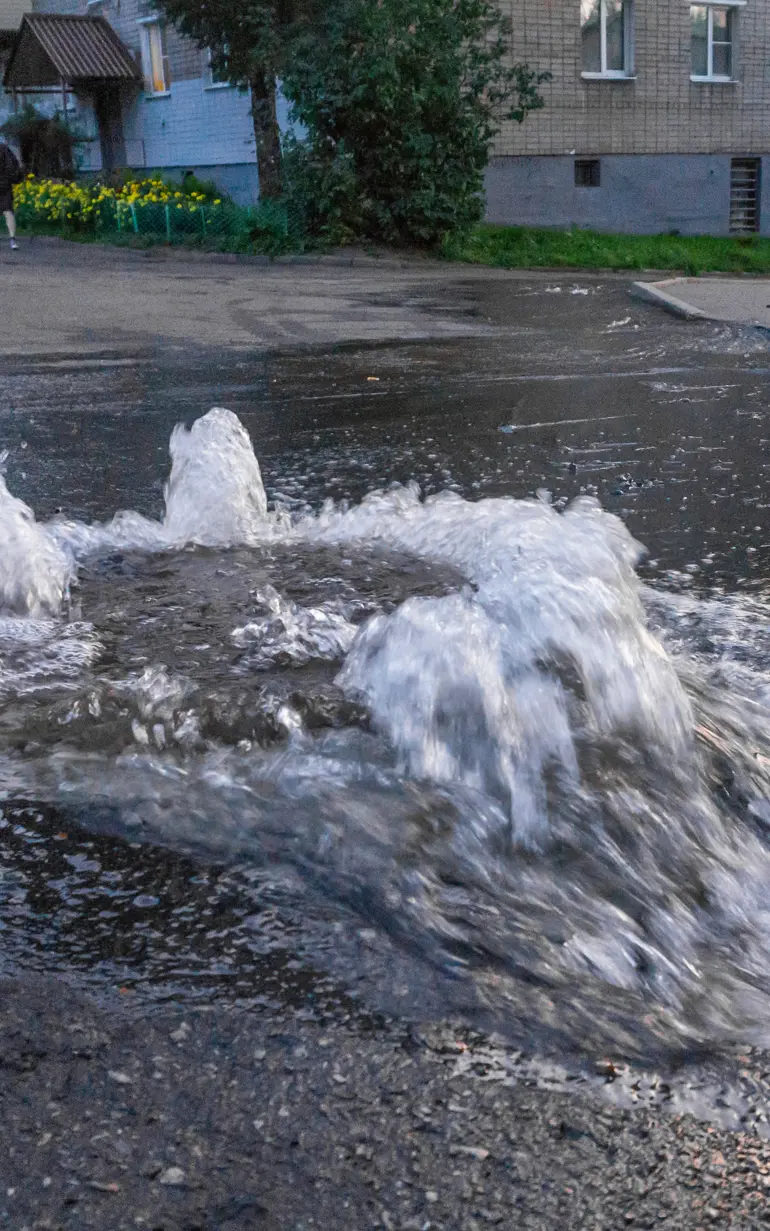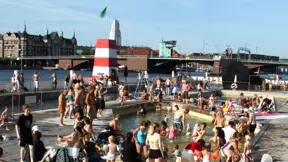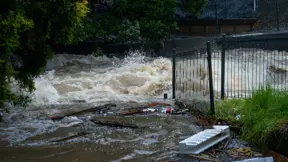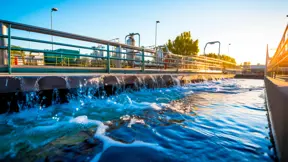
Reducing the hazard of sewage overflows
Using Computational Fluid Dynamics to help water utilities minimise sewage and stormwater contamination on the environment
Like many large cities, the stormwater runoff and sewage of Aarhus, Denmark, flow together in a combined drainage system. When a big storm hits the city, some of the excess wastewater goes to the Trøjborg retention basin for storage, until the wastewater treatment plant is able to process it. The Trøjborg basin, however, is situated near the Aarhus Harbour – a popular swimming site. During a severe storm, the contaminants from the wastewater may spill from the basin into the harbour. As part of a research project, DHI used Computational Fluid Dynamics (CFD) to examine the ability of the Trøjborg basin to settle contaminants in the wastewater. Furthermore, we investigated ways to improve the settling efficiency of the retention basin.
Challenge
Protecting the bathing waters of Aarhus Harbour
The Aarhus Harbour in Denmark is a popular bathing spot for the city’s 300,000 inhabitants. Located near the harbour is the Trøjborg retention basin. This retention basin is used to store excess storm water and sewage when there is a storm or an event that causes a higher than normal inflow. The untreated water is later pumped back to a plant for treatment before being discharged.
Like many large cities, the sewage and stormwater runoff from Aarhus flow together in a combined drainage system. Trøjborg retention basin receives this wastewater, which includes sediments in the combined sewage and storm water. Although the Trøjborg retention basin has a capacity of 16,000m3, this capacity may be exceeded during severe storms . In such an event, contaminants will overflow into Aarhus Harbour.
To address this, we examined ways to improve the design of the Trøjborg retention basin to increase the settling of sediments in the tank as part of the Water Supply and Sanitation Technology Platform (WSSTP) research project. Enhancing the tanks settling efficiency will reduce the contaminants which spill into the Aarhus Harbour in an overflow situation.
Solution
DHI examined ways to reduce the amount of contaminants from the retention basin spilling into the harbour during a storm. Using CFD modelling allowed for a detailed understanding of fluid mechanics in the basin. By understanding the flow field, we could make improvements in the ability of basins to settle sediments.
The basin’s ability to settle these sediments depends on several factors, including the profile of the sediment in the inflow, the inflow rate and the geometric features of the basin and spill structure.
We used CFD modelling to calculate the 3D dynamics of the flow field within the retention basin during the filling and overflow stages. We then assessed streamlines of the flow paths, sediment concentration contours and the quantity of spilled contaminants.
For the Trøjborg retention basin, we found that there was a short flow path between the basin inlets and the spill structure, allowing for a high concentration of sediments near the outlets. In order to lengthen the flow path, we suggested adding baffles (flow directing panels) to the retention basin. This gives the sediments more time to settle, increasing the settling efficiency of the tank and decreasing the amount of sediments that spill out when the basin overflows.
Client:
Research project in collaboration with the Danish Water Supply and Sanitation Technology Platform (WSSTP)
Location:
Denmark
Related SDG(s):
SDG 6: Ensure availability and sustainable management of water and sanitation for all
Technology:
Computational Fluid Dynamics
Results
- Successful verification of how well sediments settle in a retention basin during design and planning
- Existing retention basins were optimised, improving their performance and operational efficiency
- Substantial reduction in contaminant spills thanks to improved settling process
About our client
This research project was a collaboration with the Danish Water Supply and Sanitation Technology Platform (WSSTP) – a thematic working group dealing with sustainable water management in urban areas.
You may also like
How can we help?
With our global network of offices, we make sure you get the right answers to your local needs. Tell us about your water challenges and we will get back to you.


